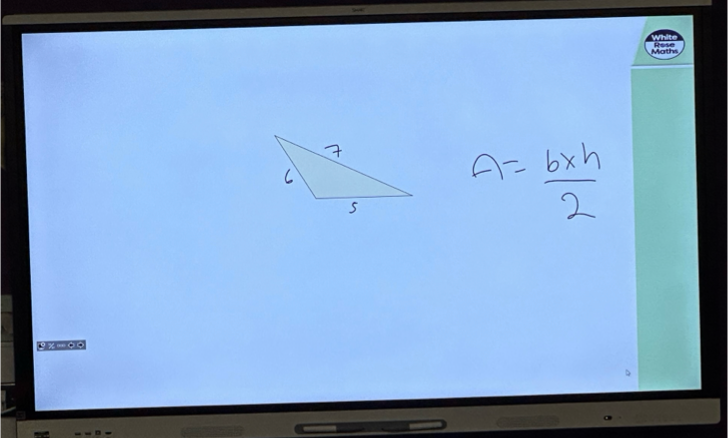#74 Ask an impossible question to further check students' understanding
But becareful not to give the game away!
Hello, and welcome to the Tips for Teachers newsletter.
I have 7 free websites
I write 2 free weekly newsletters
I host 2 free podcasts
I share over 200 free CPD videos
If you find my work useful, please consider becoming a Patreon
💡 A tip to try in class this week 💡
I watched a Year 8 maths lesson recently where the teacher asked her students to work out the area of his triangle:
The students will not be taught trigonometry for a few years, so the question was impossible to answer with the tools at their disposal. And that is what made it such a good check for understanding.
The teacher made this even more effective by not saying anything. She just popped it up on the board, just like she had done for every other question that lesson. I have seen teachers use similar unanswerable questions, but sugar-coat them with hints such as Think carefully about this one, or Are we sure we can answer this one?
I have written previously about the problem with offering unavoidable hints - they reduce the validity of the check for understanding, and rob students of the opportunity to think hard and show what they really can do.
By offering no such hints, the teacher had an accurate sense of what students knew and didn’t know, and the subsequent mini-whiteboard check dew out some interesting misconceptions:
So, now and then, throw in an impossible question, but disguise the fact that it is impossible.
What do you think of this idea?
What would you need to change to make this tip work for you?
When could you try it for the first time?
View more than 200 Tips for Teachers
🏃🏻♂️Before you go, have you… 🏃🏻♂️
… tried last week’s tip to use when doing the register?
… read my latest Eedi newsletter investigating whether AI can plan a maths lesson?
… listened to my latest podcast with Ollie Lovell about a recent lesson he taught?
… read my Tips for Teachers book?
… considered booking some CPD, coaching or maths department support?




I'm not sure I understand the point of asking pupils a question they can't answer at that point in time - perhaps you can explain further what made this useful?